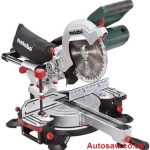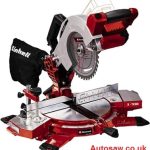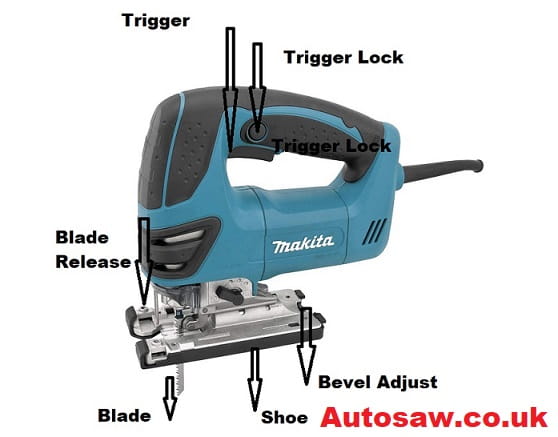As an Amazon Associate, I earn from qualifying purchases.

When it comes to woodworking, having the right tools is essential for achieving accurate and efficient results. Two popular options that woodworkers often consider are the band saw and the table saw. Both of these power tools have their own unique features and advantages, making them suitable for different types of woodworking tasks. In this article, we will compare band saws and table saws to help you understand their differences and choose the right tool for your specific woodworking needs.
Contents
Band Saws
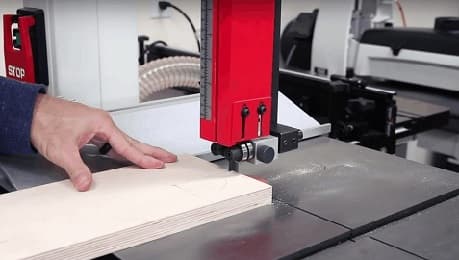
Definition And Functionality
A band saw is a power tool that consists of a continuous loop of toothed metal blade, stretched around two or more wheels. The blade moves in a vertical motion, allowing it to make precise cuts in various materials, including wood, metal, and plastic. Band saws are particularly known for their ability to cut intricate curves and irregular shapes with ease.
Key Features Of Band Saws
- Vertical cutting motion
- Thin blades for detailed cuts
- Adjustable blade tension for different materials
- Wide cutting throat for increased capacity
- Optional attachments for resawing and other specialized cuts
Types Of Cuts Possible With Band Saws
Band saws excel in making curved cuts, such as cutting circles or irregular shapes. They are also ideal for resawing, which involves cutting a thick piece of wood into thinner boards. Additionally, band saws can handle crosscuts, bevel cuts, and even some rip cuts, depending on the size and power of the machine.
Table Saws

Definition And Functionality
A table saw, also known as a bench saw or a sawbench, is a woodworking tool consisting of a circular saw blade mounted on an arbor, driven by an electric motor. The blade protrudes through the surface of a flat table, allowing users to guide the material through the blade for precise cuts.
Key Features Of Table Saws
- Fixed blade with adjustable height and angle
- Large and sturdy work surface
- Rip fence for straight-line cuts
- Miter gauge for angled cuts
- Various safety features, including blade guards and anti-kickback mechanisms
Types Of Cuts Possible With Table Saws
Table saws are primarily used for making straight cuts and rip cuts in wood. With the help of the rip fence, they can accurately cut wide boards into narrower pieces. Table saws also excel in making miter cuts, bevel cuts, and dado cuts with the use of appropriate accessories.
Band Saw vs. Table Saw: A Comparison
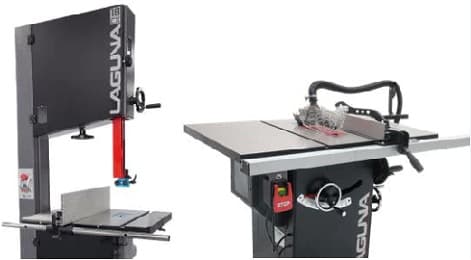
Cutting Capacity And Versatility
Band saws offer a greater cutting capacity when it comes to handling large and thick pieces of wood. Their wide throat and vertical cutting motion allow for intricate curves and resawing. On the other hand, table saws excel in making precise and straight cuts on smaller workpieces, especially when equipped with a high-quality rip fence.
Precision And Accuracy
When it comes to precision, table saws are known for their accuracy in producing repeatable cuts. The fixed blade and sturdy work surface ensure consistent results. Band saws, while versatile, may require more skill to achieve the same level of precision due to their blade’s flexibility and potential for drift during cutting.
Safety Considerations
Both band saws and table saws come with their own set of safety features. Table saws often have blade guards and anti-kickback mechanisms to prevent accidents. Band saws, although generally safe to use, require proper caution due to the exposed blade. Using a blade guard and keeping fingers away from the blade path is crucial for safe operation.
Price And Accessibility
In terms of price, table saws are generally more affordable and accessible compared to band saws. Entry-level table saws are available at lower price points, making them suitable for beginners or those on a tighter budget. Band saws, especially models with larger cutting capacity and advanced features, tend to be more expensive.
Choosing The Right Tool For Your Needs
Woodworking Projects and Applications
Consider the type of woodworking projects you undertake regularly. If you frequently work with large and thick stock, require intricate curves, or need to resaw materials, a band saw would be a valuable addition to your workshop. If your projects primarily involve straight cuts, smaller workpieces, and repetitive cuts, a table saw would be a more suitable choice.
Available Workspace
Evaluate the available space in your workshop. Band saws typically require more floor space due to their larger footprint and the need for material movement. Table saws, on the other hand, can be integrated into a workbench or a smaller workstation.
Budget Constraints
Consider your budget when choosing between a band saw and a table saw. Determine the features you prioritize and find a balance between your woodworking needs and your financial limitations. Remember that investing in a high-quality tool can provide better performance and longevity.
FAQs
Which saw is better for cutting curves?
Band saws are better suited for cutting curves due to their vertical cutting motion and thin blades. They offer greater maneuverability and control when navigating intricate shapes.
Can I use a band saw for ripping lumber?
While band saws can perform rip cuts, they may not be as efficient as table saws for this specific task. Table saws with a rip fence are designed to provide straight and precise rip cuts on lumber.
Are band saws or table saws safer for beginners?
Both band saws and table saws can be safe if used correctly and with proper safety precautions. Beginners should familiarize themselves with the specific safety features and guidelines of the tool they choose to use.
Can I use a table saw for resawing?
Table saws are not ideal for resawing thick materials. Band saws are better suited for this task due to their wider throat and the ability to accommodate thicker blades.
What are some alternative saw options for specialized cuts?
For specialized cuts, other saw options to consider include jigsaws for intricate curves, scroll saws for detailed work, and circular saws with guide rails for straight-line cuts on larger materials.
Conclusion
In summary, both band saws and table saws are valuable tools for woodworking projects. Band saws excel in cutting curves, resawing, and handling larger materials, while table saws offer precision and accuracy for straight cuts and repetitive tasks. Assess your specific woodworking needs, available space, and budget constraints to make an informed decision on which tool suits you best.
